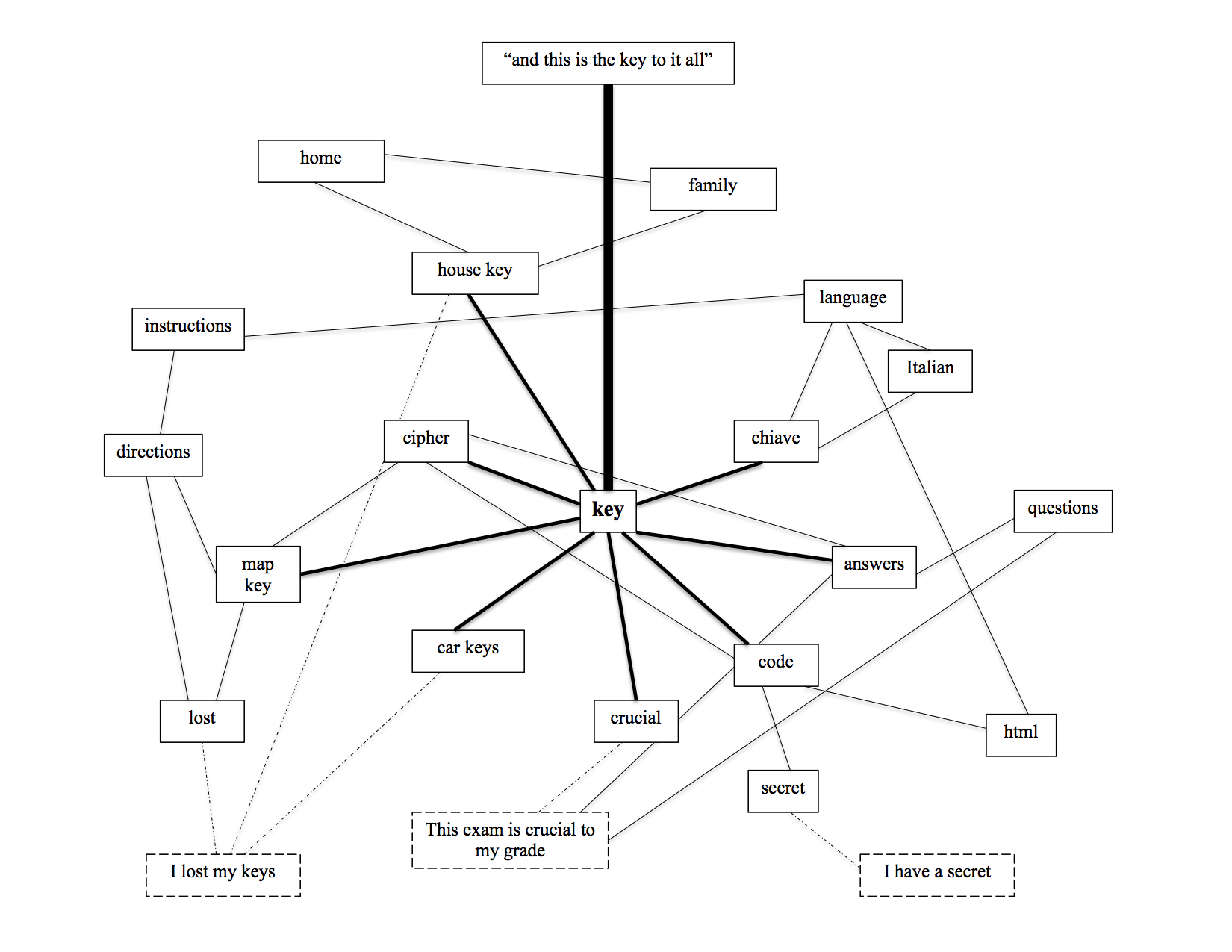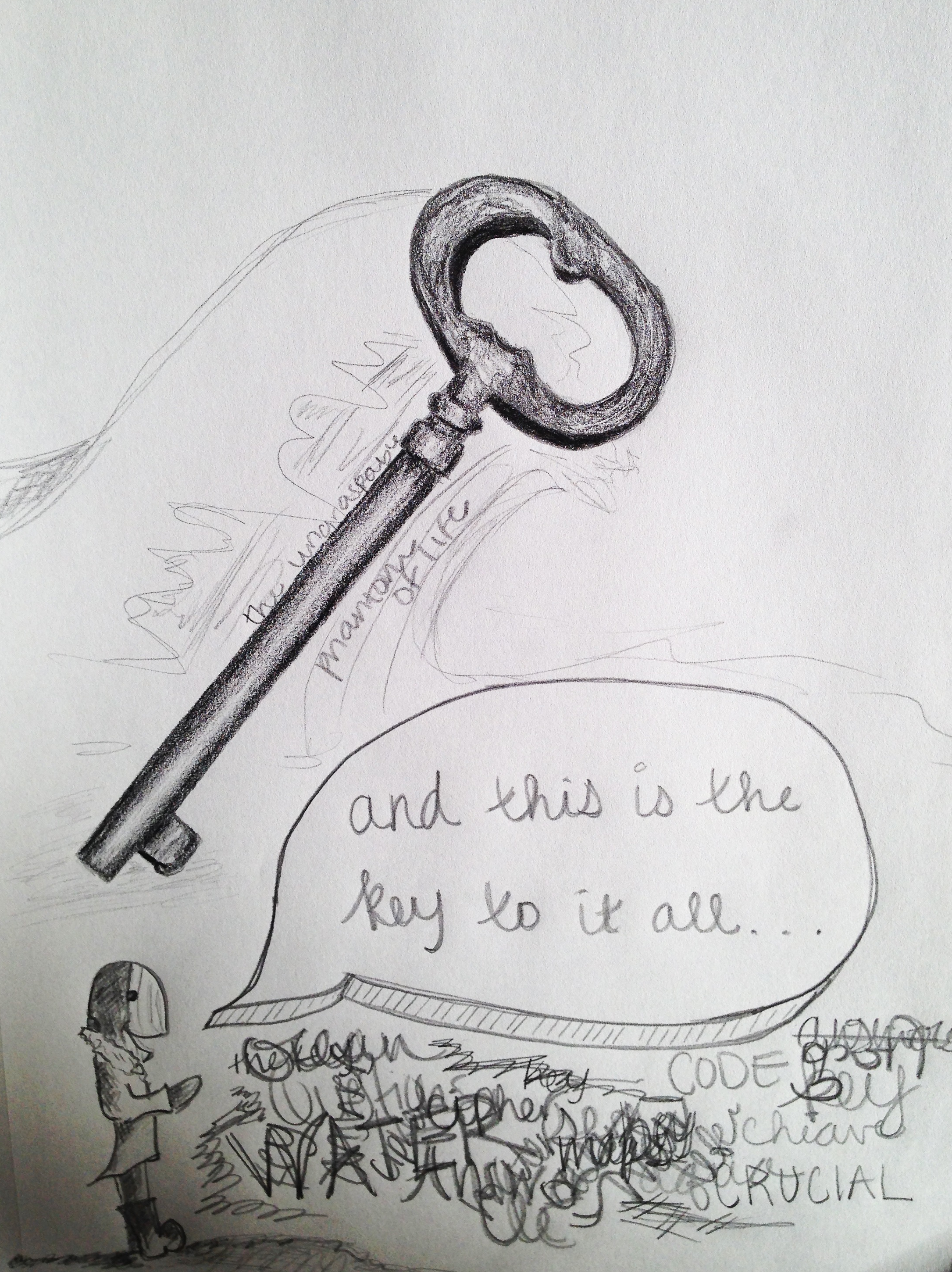Lab Report 1: Image Lab
Image Lab Report
Throughout the Image Lab experience, the tools used were not extremely definable, such as a search engine or a program such as n-gram or Translation Party. Instead, the Image Lab tools involved the reader/creator's hand, a pencil and paper. Although the concept of an image lab is relatively new, the tools of pencil and paper have been used since 1564 and the fourth millenium BCE. These technologies have been used for recording information, encoding memories, ideas, thoughts, and actions onto a physical and durable surface. Paper and pencil has been used to make these more abstract concepts physical and in a way, visual: we are able to read the words on the page. Just as writing is a form of creation, so too is the exploration of the text through images. These tools were used in the Image Lab to explore elusive passages and concepts found in the text, and to find out what these ideas look like. The aim of the image lab was not to necessarily start drawing with an idea of exactly what we were going to create, but rather to start with a question, and explore it through drawing, discovering the gaps in the text, bridging them with answers and exposing more questions.
As we explored in the Image Lab preparation, current research involving art exploration of text and problems involves the Image Lab run by Lynda Barry and also Andrea Marks's discussion about visual thinking, writing, and modern textual analysis. As Lynda Barry emphasizes in her interview with Marianne English Spoon in the magazine "On Wisconsin", “When I was in school, I started out with this question: What is an image? And by images, I mean the thing that’s contained by everything we call the arts,” we are encouraged to explore what an image all reveals to us, both in our visual experience of the finished product and the experience of creative creation. There is more to an image than just the black and white lines we see on paper, beneath the image is a whole wealth of meaning, intentions, and unexplored ideas. By exploring passages in Moby Dick through drawing, we were able to think differently about the initially flat and ordered text, by making the text more accessible, and at times inaccessible to the reader and viewer. We were able to explore what ideas look like and how they take shape from static text. This form of multi-sensory and multimodal research and exploration gave us the opportunity to create visual metaphors: creating physical representations of the sensory connections our brain experiences when reading.
Each sentence that we read branches out to create a web of connections between the words we read, our own memories, experiences, interpretations, and perceptions. I tried to illustrate this web, which we unconsciously (and consciously) access every time we experience text, below:

A huge part of this word web is the visual experience: as we read the text we visualize Captain Ahab standing top-deck nailing the gold piece to the mast, we see the glint of steel, we hear the hammer. One word that we read, in the image above represented by "key", leads to a phantom experience of what actually happened: our brain, to understand what we read, recreates the action for us, meanwhile making connections to its own memories and experiences, the anatomy of which is explained in this article by Luke Mastin. We read the initial phrase "and this is the the key to it all", which we then dissect into individual words, above focused on the word "key", denoted by the extra bold line connection. As we visually interpret "key" while reading, our brain begins to make connections between the various meanings and possible definitions (depicted above as thinner solid lines), these definitions then lead us to more abstract ideas, experiences, and memories (above depicted as dashed lines). The Image Lab attempts to make this web and multi-sensory experience visual to answer a question.

In my exploration of the passage in the text: "the ungraspable phantom of life; and this is the key to it all" (page 5 in our text, in Chapter 1: Loomings), I wanted to know more about what this "key" was. I began to explore what a key could all mean: a cipher, a literal key that goes into a lock, a lever, an answer, a map key, a legend. When exploring this concept, I realized that all of these definitions revolved around a key being a tool, usually used to open, unlock, or answer, to make graspable the ungraspable. However, this key that Ishmael talks about is for the ungraspable phantom of life - something that is not necessarily tangible. I began with drawing the most tangible object that meant "key", and then added in the words, waves, and figure in the lefthand corner. The experience of drawing in this image lab really helped me to experience this "ungraspable phantom", especially when I added the shading to the key. As I began with the faint skeletons of my drawing, slowly layering in darker and denser shadows, the ungraspable became tangible - a key began to form. This shading also made me think of covering over and the layering of a narrative - just as I was able to cover over an mistakes or stray lines that I didn't want to be seen with my pencil - the narrator is able to cover over any narrative threads or indiscretions with his/her words. This image lab research about covering over changed the way I continued to read and explore the text, for how do we know that Ishmael is telling us everything, and what is he covering over when narrating? How do we know what to trust and what is entirely up to the subjectivity of the narrator?
These moments of creation, covering, and layering, which help us to bridge the gap is visually expressed through performing artist Heather Hansen, in her charcoal creations, "Emptied Gestures":
This video visually expresses the transition from the skeletons of a drawing, the wisps of an idea, to the layered and textured final product. As we discovered in image lab, this final product does not necessarily answer the question we sought out to answer, much like Hansen's initial lines and forms did not help us predict the final product.
These tools we used in image lab allowed us to explore the gaps we find in the text that often are left in ambiguity by the words on their own. Ishmael verbalizes this gap in Chapter 42: The Whiteness of the Whale,"It was the whiteness of the whale that above all things appalled me. But how can I hope to explain myself here; and yet, in some dim, random way, explain myself I must". Mere words were not enough to explain the concept of how the whiteness of the whale so appalled Ishmael, and he used 3,617 words to try and bridge the gap. Through the use of exploratory images, readers (who don't need to be artists) are able to make the concepts and ideas that the writer/narrator dances around with words a physical and visual experience to solve the problem in a multimodal setting. Like Ishmael iterates to us in Chapter 55: Of the Monstrous Pictures of Whales, "True, one portrait may hit the mark much nearer than another, but none can hit it with any very considerable degree of exactness", we see that the attempt to create and paint a whale in truth is impossible, but instead to explore a whaling scene, or to paint around the issue (or whale/object in this case) is the closest to truth we can get. We see this declaration in Chapter 56: Of the Less Erroneous Pictures of Whales, and the True, where Ishmael articulates that the closest we can come to a picture of a true whale "is by such pictures only [pictures of whaling scenes]. . . that you can derive anything like a truthful idea of the living whale as seen by his living hunters". We cannot set out to draw something; rather we must draw around our question to illuminate and discover the idea that has been alluding us.
Although the Image Lab was frustrating and did not necessarily answer the questions that the participants sought after, the concepts of multimodal and multi-sensory research that it brought up are important when hacking the text, which has become increasingly more obvious when deciphering Ishmael's complex narrative. Rather than succumbing to creative limitations (feeling that one is not artistic enough to engage in the image lab), I believe that we should explore further what the image lab has to offer - which doesn't necessarily mean drawing a picture, but rather to explore the text in a different medium to create new questions and answers to decipher Moby Dick.